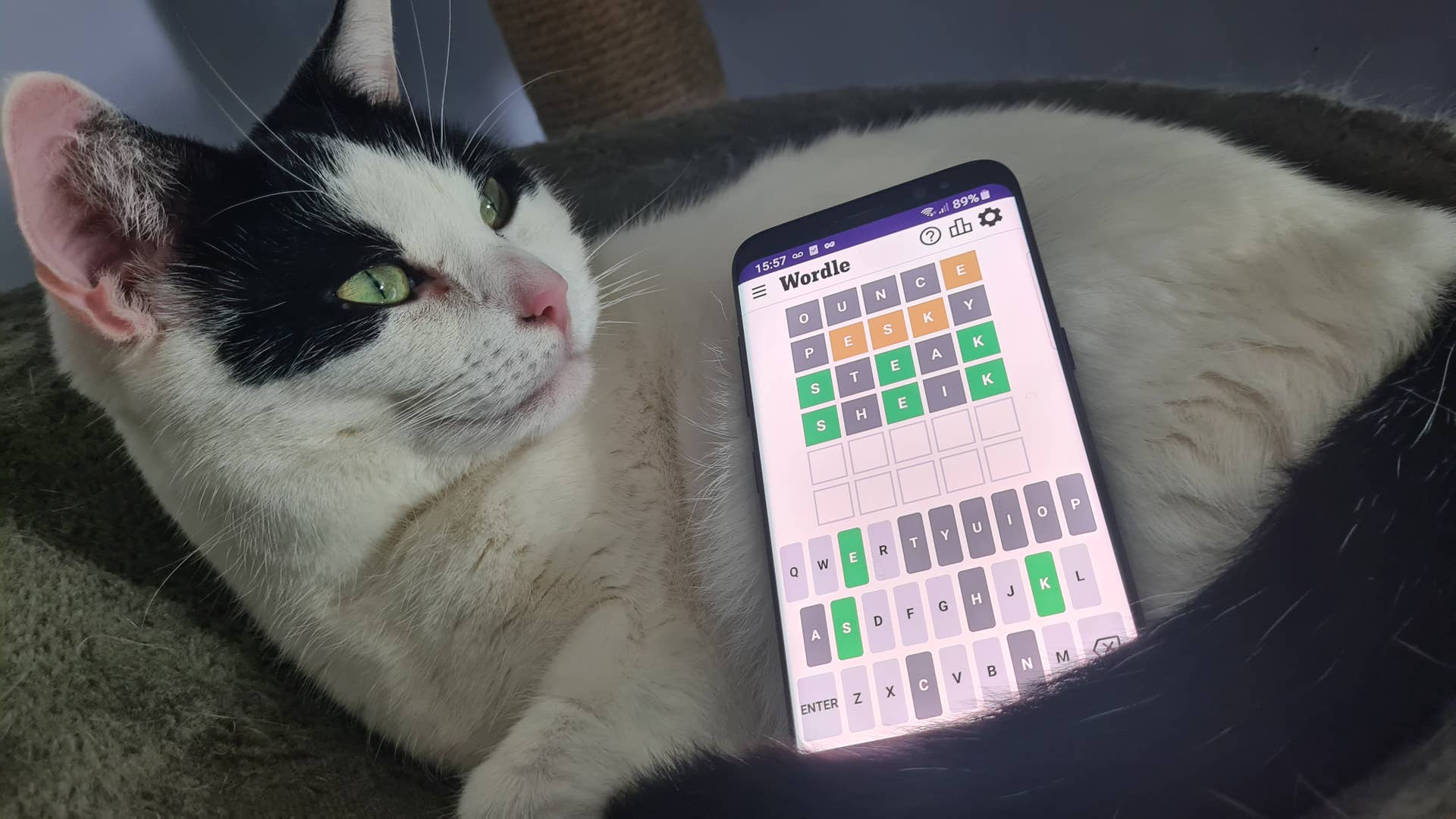
iPhone 16 Pro Max Review
The iPhone 16 Pro Max is here, leading the way as Apple’s top-tier phone for 2024. That honor doesn’t come cheap, with the Pro Max starting at $1199 and going all the way up to $1599 if you want 1TB of storage (that’s the price of two base iPhone 16s). Apple’s got a great phone on its hands with this one, offering a bigger screen in a tried and true design, even if it’s a bit too wide for my taste. With a few new features, like Camera Control and the inbound Apple Intelligence, the iPhone 16 Pro Max offers some upgrades over its predecessors – not to mention it’s ripping fast. But whenever a phone demands this high a price, it really needs to stick the landing, and the iPhone 16 Pro Max has just a few minor missteps.
Purchasing guide
The iPhone 16 Pro Max is available now at Best Buy with 256GB of storage for $1199, 512GB of storage for $1399, and 1TB of storage for $1599. It comes in a golden Desert Titanium, a slate Natural Titanium (reviewed here), White Titanium, and Black Titanium. The smaller iPhone 16 Pro is available starting at $999 and includes the same camera system and SoC, so just sacrifices some screen size and battery capacity to offer a lower price and smaller footprint.
Design and Features
You’d be forgiven if you saw the iPhone 16 Pro Max and didn’t realize it was the new model. Apple changed little about the phone, visually. It rocks a bigger screen, a smaller Dynamic Island for the selfie camera and Face ID hardware, and it now has a few extra buttons, but it’s otherwise still a little more than reminiscent of the iPhone 11 Pro Max that kicked off the line in 2019.
Apple’s upgraded display shines with undeniable gorgeousness. The 1320×2868 resolution is impeccably sharp at this display size, and with an OLED panel, it shows vivid color and punchy HDR. The iPhone 16 Pro Max isn’t reaching the brightest levels on the market, but its 2000-nit peak is plenty for use even in intense sunlight. The 120Hz refresh rate makes for pleasantly smooth navigation and fluid gaming. I enjoyed the hell out of half a season of The Foundation on a long flight, with the Pro Max displaying the sci-fi worlds brilliantly. That said, I can name a handful of other phones that would do just as well. The speakers on the iPhone 16 Pro Max are punchy and loud, pairing well with the display, and they offer surprising stereo when held about a foot away.
The display has grown over the years, having now reached 6.9 inches factoring out the curved edges, and the bezels have narrowed considerably. They’re truly tiny, and that lets the iPhone 16 Pro Max measure only 5mm taller and 0.3mm wider than the iPhone 11 Pro Max while offering a 0.4-inch increase in display. That extra screen space can be handy, but the iPhone 16 Pro Max remains as unwieldy as the last Pro Max model I tested, proving more than a little difficult to manage one-handed – and I’m 6’3” with proportionate hands.
The Dynamic Island slightly cuts into the display area, and though it’s not a major distraction, it’s still more intrusive than the smaller cutouts on most Android flagships. It can be even more annoying when watching shows or movies. Apple will default to shrinking wide content down to avoid overlapping with the cutout, even if it results in letterboxing on all sides. You can stretch content back out to fill, but of course then you will have to settle for the Dynamic Island cutting into the content. The tradeoff may be worth it, as FaceID is simply excellent. It performs facial recognition quickly with little fuss about angle or lighting.
Apple’s choice of materials is satisfying. The titanium frame feels sturdy and the Ceramic Shield glass on the front and back is pleasingly smooth. The display glass feels a little better bonded to the phone, as the back has a hollow feel and sound, but that’s rather common on phones. The glass has held up well in testing, showing few blemishes. That said, the base model iPhone 16 I’m also testing has Ceramic Shield as well, and it’s picked up a few distinct scrapes despite a relatively brief and sheltered life, so I still find Apple’s marketing of the phone’s durability a little disingenuous. The water protection levels have been raised to keep water out at depths of 6 meters for up to 30 minutes, which is astounding.
For what it’s worth, the iPhone 16 Pro Max has gone fully eSIM, meaning there’s no SIM card tray for a physical SIM. While many carriers support eSIM, this may make it difficult to travel and pop in SIM cards as needed. Having moved my SIM card to many different review phones over the years with no issue and having spent more than an hour trying unsuccessfully to get my eSIM transferred from the iPhone 16 Pro Max to my iPhone 16, I’ll say the eSIM-exclusivity isn’t an upgrade.
In better news, after years of the iPhone using a Lightning port, it’s wonderful to see the iPhone 16 Pro Max carrying a USB-C port, even if it’s not the first to do so. The USB 3.0 transfer speeds help with offloading photos, though it could certainly still stand to be faster, especially for shooting high-resolution video.
Meet Camera Control
In addition to the Action Button added last year, the iPhone 16 Pro Max gets the new Camera Control button on its right side, near the bottom of the phone. It’s positioned well for use while taking selfies, but it’s too far up the side of the phone for easy use with the rear sensors. In theory, it’s a great addition. The dedicated shutter button on the Xperia 5 II was an absolute joy to use. But Apple’s done a lot more. The button supports light presses, full presses, and swipes, packing lots of potential controls into this single button.
The new Camera Control could have been a simple shutter button and still been a great extra, but Apple perhaps overloaded it. There’s a fine line between a tool for a power user and a mess, and the Camera Control jumps back and forth over that line. At first, it’s easy to get lost in without understanding a light double-tap pulls up the menus. It’s also tricky to grapple with the shutter button operating when it’s released, not pressed. Plus the physical process of clicking and releasing creates that much more movement of the phone, giving the OIS and EIS plenty of work to maintain a clear image.
In some cases, Camera Control isn’t even providing clear data. For instance, it has an option to select the camera you’ll use – in contrast to simply using the zoom slider – but it doesn’t actually conform to the selection you make. Just as it does with the zoom slider, it will opt to use digital zoom on the main camera rather than actually switching to the telephoto camera in certain lighting conditions. This defeats the purpose of the camera selection.
Software
Apple has made big promises regarding AI in its software (like just about everyone else this year). And yet the iPhone 16 Pro Max has launched without Apple Intelligence, which is set to come later in iOS 18.1. We’ll just have to wait and see what it’s worth. The rest of iOS 18 is clean and effective. Even coming from years of Android use, I don’t have too much trouble getting around the phone and managing settings. The customization has also come a long way over the years, providing more freedom to style things and arrange the home screen to my preferences.
Gaming and performance
The iPhone 16 Pro Max has more than enough performance for everyday operation thanks to its A18 Pro chip. The muscle in the A18 Pro’s CPU cores outpaced every Android phone I’ve tested, scoring 3375 points for a single core and 8237 points for all scores in Geekbench 6. The GPU performance is also more than enough to run Wuthering Waves at max settings and at a fluid 60fps without a single hitch.
Apple’s performance crown is still intact for the balanced CPU and GPU, but when it comes to graphics performance alone, the tides are turning. The iPhone 16 Pro Max’s 4144-point score in 3DMark’s Wildlife Extreme falls short of the OnePlus 12 (4780 points), Samsung Galaxy S24 Ultra (4444 points) points, and Nubia RedMagic 9S Pro (5381 points). The story repeats for Steel Nomad Light, where the OnePlus 12 nips on the iPhone 16 Pro Max’s heels and the RedMagic 9S Pro leads the way at 1836 points to the iPhone’s 1763. The Solar Bay benchmark brings in some heavy ray-tracing effects, and the OnePlus 12 and RedMagic 9S Pro again come out on top, with RedMagic leading 9239 to 7169.
Sustained performance also isn’t in the iPhone 16 Pro Max’s favor. Running the Steel Nomad Light stress test, which performs 20 runs in a row, the iPhone 16 Pro Max had one fast run then dropped off considerably for the remaining 19. Meanwhile the RedMagic 9S Pro offered consistent performance with even its lowest score out of 20 runs coming close to the iPhone 16 Pro Max’s best run.
While the iPhone 16 Pro Max may not be the graphics performance champion, all of these phones are performing exceptionally. And considering the iPhone 16 Pro Max has no trouble running a heavy game like Wuthering Waves at full steam for an extended session, it’ll likely be some time before we see it really brought to its knees by much.
The battery in the iPhone 16 Pro Max is ready for the long-haul. I’m not the heaviest user, but I played some games, used the cameras extensively, and watched shows on the iPhone 16 Pro Max, and I was consistently able to get a full day of battery life and sometimes two. Apple’s default always-on display would likely make that harder to do though, as it actually keeps most of the display on, even if it’s dim. I found it confusing and pointless, so I switched it to use a black background (black OLED pixels don’t use power after all), and it’s in those conditions I got the battery life mentioned here.
Cameras
The cameras have always been a big part of what sets the Pro iPhone models apart from their non-Pro counterparts. Here are the cameras the iPhone 16 Pro Max packs:
48MP Wide, f/1.78, OIS48MP Ultrawide, f/2.2, 120-degree FOV12MP Telephoto, f/2.8, 5x zoom, OIS 12MP Selfie, f/1.9
The iPhone 16 Pro Max’s cameras are predictably excellent. The main sensor is a powerhouse, capturing a ton of light for clear detail even in tougher conditions. It snaps sharp, gorgeous, colorful photos that really offer a lot to work with. I’ve heard complaints that Apple’s image processing does too much to eliminate shadows, and that’s valid, but Photographic Styes offer a quick and easy way to adjust that and bring some depth back to the shadows for punchier contrast.
The main sensor is responsible for all zoom levels between 1x and 5x, and sometimes the iPhone 16 Pro Max will opt to use this digital zoom in lieu of optical zoom even at 5x and beyond. That’s bad news, because the digital zoom really doesn’t look all that much different than a shot taken at 1x and then simply blown up. Luckily, the main sensor takes great photos, so you can get away with zooming in on them a bit before they start to look bad. The problems really only start to crop up when the main sensor takes priority over the 5x, which has a huge advantage in clarity on distant objects, providing sharp detail where the main sensor appears to have oil smeared over the lens at 5x.
The 5x camera is a great addition, letting you get extra close to subjects off in the distance. The full-size images it captures are sharp and well-matched with the main sensor color-wise. With just a 12MP sensor, the telephoto camera doesn’t have a lot of extra data to work with for punching in beyond 5x, and fully-zoomed shots look more like an abstract painting than a clear picture.
You can get more into your shots with the ultra-wide, but picture quality is a letdown. Even though Apple has gone with a 48MP sensor here, just about every photo I took with it looks very soft and noisy when blown up to full size, especially at the edges of the photos. That’s true at low ISO settings as well, and it only gets worse when the ISO is high. Autofocus may be a culprit. Photos of closer subjects tended to look significantly better than distant ones with the ultrawide, including macro photos.
Finally, the selfie camera captures great light and color, but like the ultrawide, it seems to struggle with sharpness. Zooming in even a little bit on every selfie I’ve taken with it shows soft details and poor focus. The photos don’t look outright bad, and when viewed on a small phone screen, the shortcomings don’t really come up, but they could become limits for selfies you don’t plan to just send to friends and share on social media. Next to the Pixel 9 Pro’s selfie camera, this just doesn’t hold up.
Mark Knapp is a contributing freelancer for IGN covering everything electronics and gaming hardware. He has over 10 years of experience in the tech industry with bylines at PCMag, Reviewed, CNET, and more. Find Mark on Twitter @Techn0Mark or BlueSky at @Techn0Mark.








